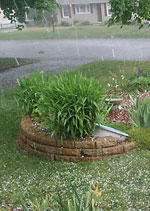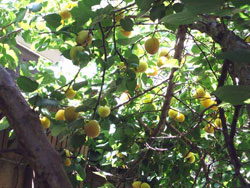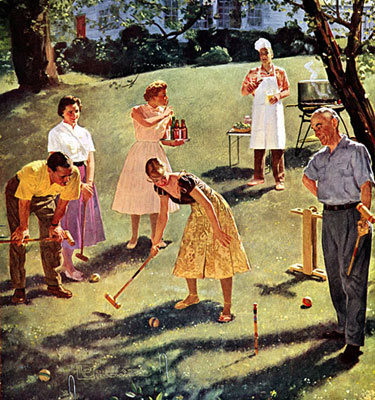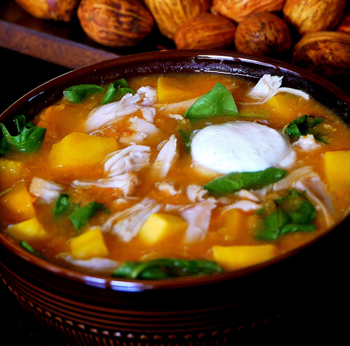 So we had a hail storm yesterday.
So we had a hail storm yesterday.
We'd had kind of crazy weather all day - blue skies and puffy clouds one minute, dark gray clouds, pouring rain and sky to ground lightning the next. The national weather service (or whoever does this) even interrupted TV programming to run some severe weather warnings throughout the afternoon.
Initially the warnings were about the lightning in the area, but then around dinner time they mentioned the hail. Bill and I had been in the kitchen - he was making dinner and I was making the TWD Mixed Berry Crumble (see previous post) - when the latest warning came on, and we went downstairs to listen (we have one TV, and it's in the basement), and after hearing about possible hail, and just sort of shrugging it off, we went back up to the kitchen to see - yes - hail coming down.
So we called the kids, I got my camera, Bill got the DVD camera, and we hung out, mostly at the big front window, watching the spectacle.
It's good to do things as a family.



 Cooking and eating more sustainably doesn't require that you rethink your entire life. Here are some simple things you can do to get started.
Cooking and eating more sustainably doesn't require that you rethink your entire life. Here are some simple things you can do to get started. A few years ago I noticed that a tree was growing in the tiny side area between my house and my neighbor’s. By the time I took notice of it the tree was 4 feet tall. Apparently I had been ignoring that side of the house. I don’t know a lot about trees but it looked like it might be some kind of fruit tree. So I waited and asked my gardener. Sure enough, it turned out to be an apricot tree. Since the window above my kitchen sink is right above where the tree has taken root I figured that I must have spit an apricot seed out of the louvers.
A few years ago I noticed that a tree was growing in the tiny side area between my house and my neighbor’s. By the time I took notice of it the tree was 4 feet tall. Apparently I had been ignoring that side of the house. I don’t know a lot about trees but it looked like it might be some kind of fruit tree. So I waited and asked my gardener. Sure enough, it turned out to be an apricot tree. Since the window above my kitchen sink is right above where the tree has taken root I figured that I must have spit an apricot seed out of the louvers. 
